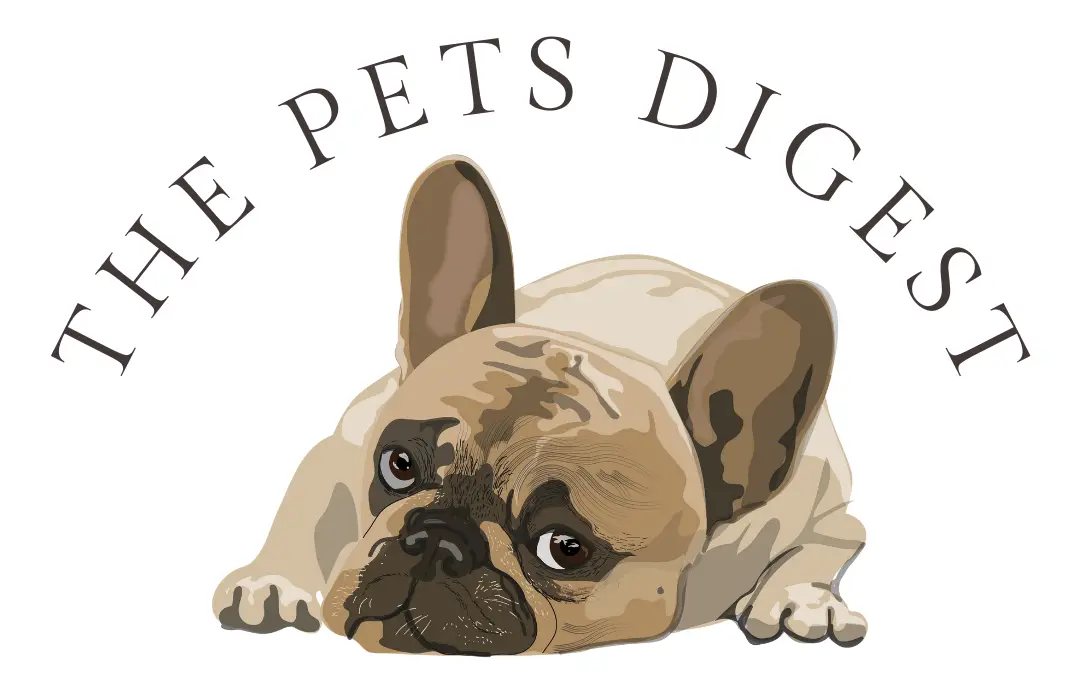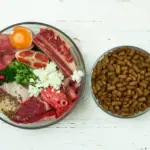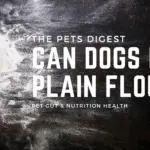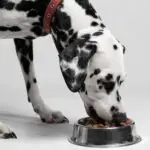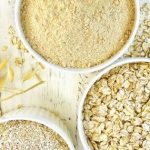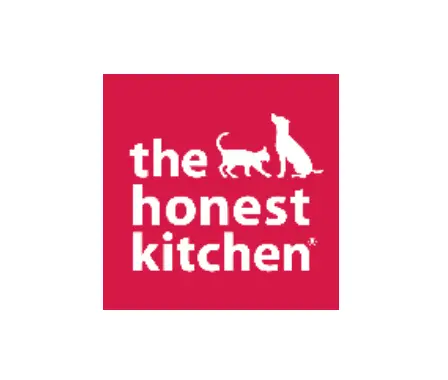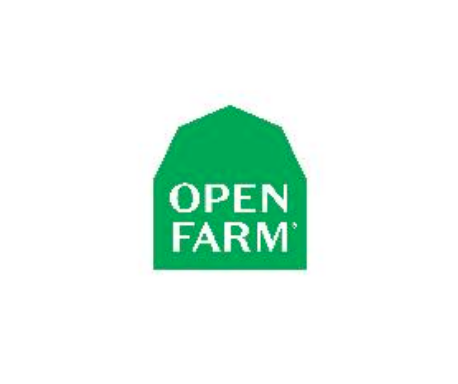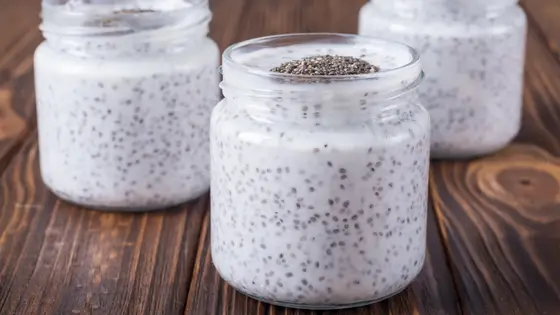Choosing high-quality dog food for your dog is of the utmost importance because your dog’s diet affects every aspect of their overall health including cognitive function, body weight, and proper growth.
There are several factors to take into account before deciding on a specific dog food. You should always factor in things like age, size, and activity level when making a decision about your dog’s diet.
Your dog is counting on you to make the best decision for their life, so choose wisely! Use the guide below to learn about what makes great dog food, the types of dog food, how to choose a food for your dog, and how to read dog food labels.
Keep reading to discover the blueprint for choosing high-quality kibble dog food.

Types of dog food
Dog food generally falls into one of two categories: dry or canned and these can further be broken down into dry-expanded, semi-moist, or soft-expanded depending on the moisture content.
- Dry-expanded
- Semi-moist
- Soft-expanded (soft dry)
- Canned dog food
Choosing a high-quality kibble food by characteristic
When searching for high-quality kibble for your dog there are some things that you should keep in mind including your dog’s individual characteristics.
1. Age
Yes, you should feed a food specifically formulated for your dog’s life stage.
The three life stages to consider when choosing food for your dog are puppy, adult, and senior. All three stages require different ingredients in the food to help your pup grow and develop properly.
| Puppies: food for puppies is aimed at growth stages, so these diets usually have higher protein levels, increased fat, and higher calorie counts since puppies generally have more energy than their adult and senior counterparts. Everything is developing in puppies including their brains so the food they eat must be able to meet their developmental requirements. Generally, most dogs are considered adults at 12 months of age, but size does play a part in determining adulthood in dogs as the chart below shows. (Source) |
| Adults: Most dogs are considered adults around 1 year of age and can be fed normal adult food for maintenance of weight, although you may want to adjust the food for size and breed as we will discuss below. |
| Seniors: Dogs are considered senior dogs at around 6 to 10 years of age depending on size. Larger dogs generally do not tend to live as long as smaller breeds so they reach senior status a little earlier than their smaller counterparts. If you would like to learn more about feeding your senior dog for optimal cognitive health and prevention of canine cognitive dysfunction syndrome read here. |

| Puppy | Adult | Senior | |
| Toy | 0-10/11 months | 10-12 months | 10 years |
| Small | 0-10/11 months | 10-12 months | 10 years |
| Medium | 0-11 months | 12-14months | 7 years |
| Large | 0-11 months | 12-16months | 6 years |
| Giant | 0-12/12 months | 14-24 months | 6 years |
Keep in mind that smaller breeds tend to mature faster than larger breeds and also live longer (many times) than larger breeds. While the chart above is helpful in determining your dog’s stage of life, most vets will use the general rule of starting your puppy on adult food at one year of age.
2. Size
While keeping in mind your dog’s age, you also want to feed for their size. Larger dogs have larger body parts (of course) and their foods complement their size requirements. So not only will you feed your large dog a lot more than a toy or small breed dog their foods will have an increased amount of nutrients.
Smaller dogs should have foods that are smaller bites so while you don’t necessarily have to feed a breed-specific food, feeding for size is highly recommended.
3. Breed
There are owners that put their dogs on breed-specific diets like Royal Canin Yorkshire Terrier or Royal Canin chihuahua-specific food. Why should you feed a breed-specific diet? Breed-specific foods often have added nutrient sources that help stave off common diseases to the breed for instance the Royal Canin Yorkshire Terrier diet has added omega-3 and -6 fatty acids, and biotin for coat health
4. Health
If your dog has a health issue like chronic colitis, pancreatitis, liver issues, or kidney issues your vet will most likely place your dog on a diet to help counteract any detrimental effects of a regular diet since food plays such a large part in health. Although, the goal in choosing quality dog food is to prevent your dog from having to be placed on these foods in the first place.
5. Activity
Dogs that are more active use more calories and will need more to meet their energy needs. These dogs can benefit from a food that takes this into account and also gets slightly more food. If you notice that your active dog is still hungry after eating consider increasing their portions after speaking to your veterinarian.
What to look for in a high-quality dog food
What should not be in my dog’s food?
- Chemicals: Bypass any foods that contain unnatural preservatives (most dog foods use vitamin E as a preservative), flavor enhancers, artificial colors, or other chemicals.
- Inferior proteins: If your food contains animal by-products or animal meals from unnamed sources as opposed to whole meats you may want to bypass this food
- Bypass foods with high amounts of ‘fillers’ like corn, wheat, or soy as these have been shown to cause leaky gut and may be the source of other health issues in dogs
- Your dog will benefit from not being fed a diet with natural preservatives as opposed to one with chemical ones like BHA, BHT, or ethoxyquin
- If your dog has allergies choose a grain or gluten-free food and one that has novel proteins. To learn more about feeding for allergies you can read our article here.
- Avoid foods that list their grains as ‘hulls’, ‘mill run’, or ‘by-products’ as these are the waste left after the grains have been processed for human consumption.
What should I look for in high-quality dog food?
- Opt for a food that has high-quality animal sources towards the top of the ingredient list (usually first, second, or third). These meats should be spelled out such as lamb, rabbit, or bison rather than unidentified “animal” proteins, “poultry” or “meat meal” sources. (if you aren’t sure where the manufacturer obtained their meat, you can always contact them)
- Choose foods that contain natural preservatives like vitamin C, vitamin E, or green tea polyphenols. Many companies also use rosemary but some owners choose to bypass this herb, if you want to learn more about it why read our article here?
- The first ingredient in a high-quality food should be a named animal protein (i.e. chicken, lamb, or beef)
- Look for foods that contain fresh sources of fruits, vegetables, and other whole foods
- Choose a food that has organic-based products when possible
- Choose food for your dog that doesn’t have a ton of ingredients listed on the bag, it’s a bonus if you can actually pronounce and know what all or at least the majority of the ingredients are
- Do look for foods containing fresh sources of fruits and vegetables
- Look for foods that identify the specific types of meat sources such as ‘beef fat’ or ‘poultry fat’ the ingredients list should not simply list general ‘animal fat’
What are some high-quality foods on the market?
While there are many on the market, theses are three that we like.
How to read dog food labels
When you’re choosing food for your dog, it is critical that you read the food label so that you know what your dog is eating.
According to the AKC, all pet food labels follow roughly the same format:
- Product and brand name or unique identifier
- Quantity in terms of product weight, liquid measure, or count, depending on the formulation of the food
- Guaranteed analysis, which specifies the number of specific nutrients
- Ingredients, which must be listed in descending order by weight
- Nutritional adequacy statement (must be backed up by testing that proves the food provides a) certain level of nutrients. It may also include the life stages the food is appropriate for
- Feeding directions
- Manufacturer’s name and address
- Calorie Statement
The Ingredients Label
The ingredients on the label are listed in descending order of weight. Meaning the ingredient at the top of the list is the most by weight. However, this is calculated prior to the food being formed into kibble and includes moisture (which can add a significant amount of weight)
The Guaranteed Analysis
The guaranteed analysis which you usually find on the side or back of the bag under the ingredients will tell you the minimum or maximum percentages of key nutrients in the food.
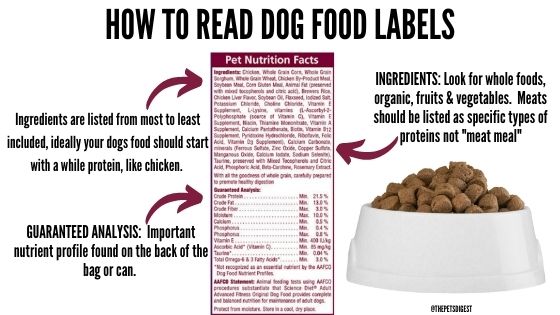
Common Terms
Organic
The AAFCO (Association of American Feed Control Officials) does not have specific regulations for labeling organic pet food; however, the USDA (U.S. Department of Agriculture) does have the NOP or National Organic Program, which develops and enforces consistent national standards for organically produced agricultural products sold.
Organic Foods should:
- Not contain any artificial coloring, flavoring, or preservatives
- Should have no or little fillers
- Not contain any antibiotics or growth hormones in meat
Natural
The FDA considers the term natural to mean nothing artificial or synthetic. Note that natural and organic are not the same. Natural can simply mean that the food you’re feeding your dog has no artificial flavors, colors, or preservatives.
Limited Ingredient
These diets have a smaller amount of ingredients than most of their counterparts and are usually chosen for dogs that have food sensitivities or intolerances that cause allergies or gi upset. They are also often used in hypoallergenic dog food trials.
New or Novel Proteins
While these aren’t usually new proteins to some dogs they may be new to your dog. Most dogs in the US are used to eating chicken, lamb, beef, or salmon and as a result, can develop allergies to them. Owners may start their dog on a ‘novel’ or ‘new protein’ diet if they have developed sensitivities to these proteins. It should be noted that a dog can eventually develop allergies to novel proteins as well.
Human-grade dog food
To be labeled as human-grade, dog food has to be legally edible and approved as food for humans as determined by the FDA. According to the AAFCO, for a product to be deemed edible for humans, all ingredients must be edible by human standards and the product must be manufactured, packed, and held in accordance with federal regulations

FAQs about dog food
Can I mix kibble with cooked food? Yes, you can, this is called top dressing and many owners do it to include functional foods for their dogs like vitamins, herbs, and other ingredients. It is a great idea to come up with a meal plan for your dog with your vet. Check out our guide for making your dog’s meals at home.
What if my dog won’t eat his or her food? Try top-dressing the food or slowly changing the food over. You can also always make the food into dog treats, try this recipe
How do I change my dog’s food to a new brand? Do so slowly, over a period of one and a half to two weeks ideally to prevent gi upset. To read a more in-depth article about switching your dog’s food read here.
RECAP
- Your dog’s food should be adequate for his/her age, size, age, and activity level
- Choose quality food look for things like organic foods, whole meats, and natural preservatives
- Avoid foods with artificial preservatives, artificial colors, and other chemicals
- Your dog’s food affects their health so always read the back of the packaging so you know what you are feeding your dog
- It is a great idea to ‘top dress’ your dog’s food with beneficial vitamins or functional foods not found in their regular kibble diet
Want to do more research about dog food? Here are some websites to check out
- AAFCO – Association of American Feed Control Officials
- FDA
- Pet Food Institute
